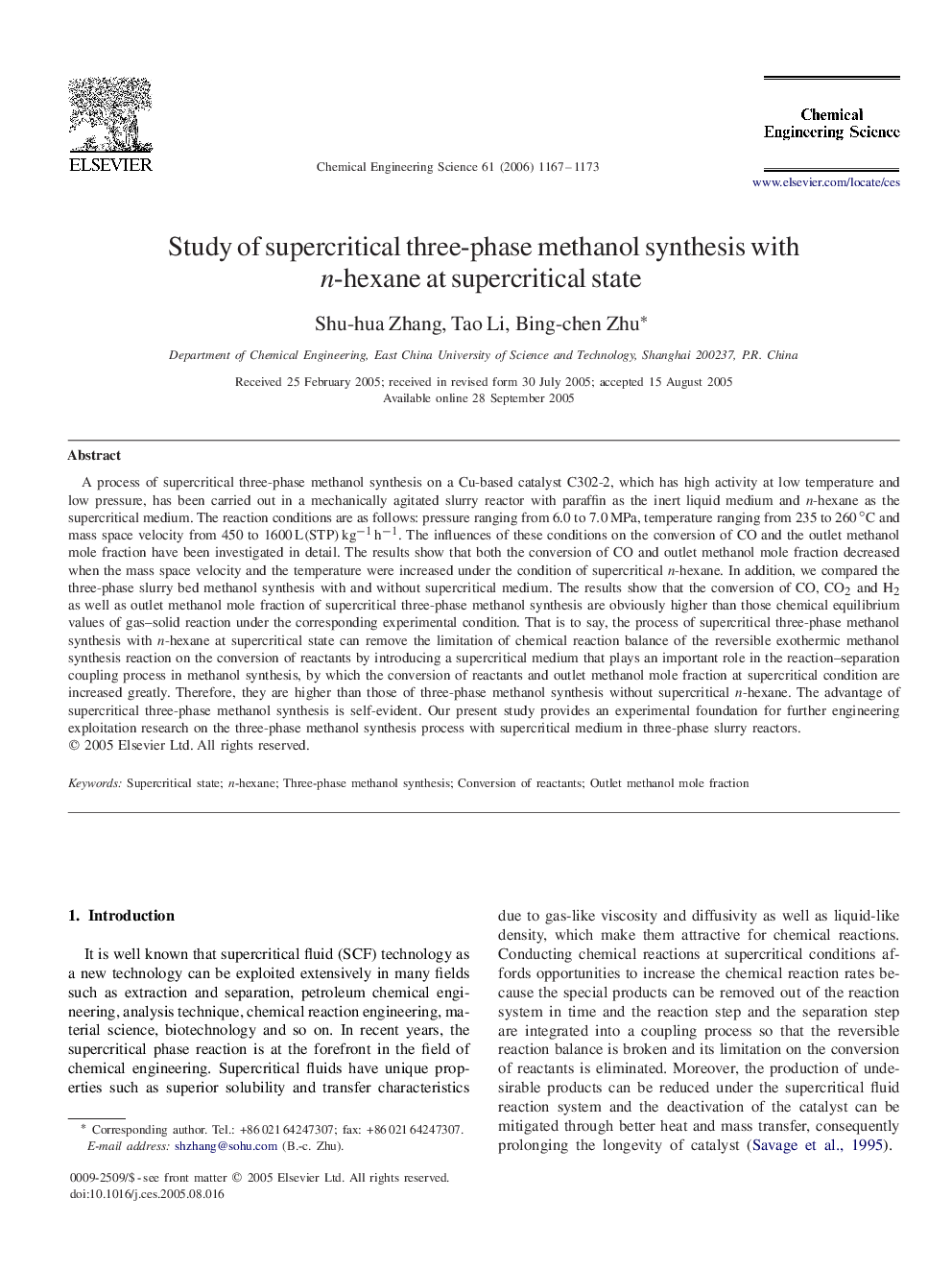| کد مقاله | کد نشریه | سال انتشار | مقاله انگلیسی | نسخه تمام متن |
|---|---|---|---|---|
| 159091 | 457026 | 2006 | 7 صفحه PDF | دانلود رایگان |

A process of supercritical three-phase methanol synthesis on a Cu-based catalyst C302-2, which has high activity at low temperature and low pressure, has been carried out in a mechanically agitated slurry reactor with paraffin as the inert liquid medium and n -hexane as the supercritical medium. The reaction conditions are as follows: pressure ranging from 6.0 to 7.0MPa, temperature ranging from 235 to 260∘C and mass space velocity from 450 to 1600L(STP)kg-1h-1. The influences of these conditions on the conversion of CO and the outlet methanol mole fraction have been investigated in detail. The results show that both the conversion of CO and outlet methanol mole fraction decreased when the mass space velocity and the temperature were increased under the condition of supercritical n-hexane. In addition, we compared the three-phase slurry bed methanol synthesis with and without supercritical medium. The results show that the conversion of CO, CO2 and H2 as well as outlet methanol mole fraction of supercritical three-phase methanol synthesis are obviously higher than those chemical equilibrium values of gas–solid reaction under the corresponding experimental condition. That is to say, the process of supercritical three-phase methanol synthesis with n-hexane at supercritical state can remove the limitation of chemical reaction balance of the reversible exothermic methanol synthesis reaction on the conversion of reactants by introducing a supercritical medium that plays an important role in the reaction–separation coupling process in methanol synthesis, by which the conversion of reactants and outlet methanol mole fraction at supercritical condition are increased greatly. Therefore, they are higher than those of three-phase methanol synthesis without supercritical n-hexane. The advantage of supercritical three-phase methanol synthesis is self-evident. Our present study provides an experimental foundation for further engineering exploitation research on the three-phase methanol synthesis process with supercritical medium in three-phase slurry reactors.
Journal: Chemical Engineering Science - Volume 61, Issue 4, February 2006, Pages 1167–1173